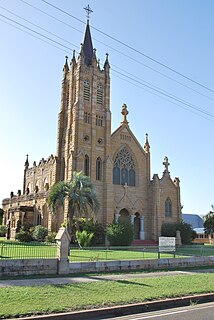
The second St Mary's Roman Catholic Church is a heritage-listed sandstone Catholic church at 163 Palmerin Street in Warwick in the Southern Downs Region, Queensland, Australia. It was designed by Dornbusch & Connolly and built from 1920 to 1926. It is also known as St Mary of the Assumption Church. It was added to the Queensland Heritage Register on 21 October 1992.
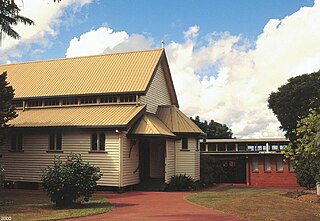
Christ Church is a heritage-listed church at 24 Macrossan Street, Childers, Bundaberg Region, Queensland, Australia. It was designed by John Hingeston Buckeridge and built from 1900 to 1958. It is also known as the Anglican Church. It was added to the Queensland Heritage Register on 28 April 2000.

St Agnes Anglican Church is a heritage-listed churchyard at Ipswich Street, Esk, Somerset Region, Queensland, Australia. It was designed by John Hingeston Buckeridge and built in 1889 by Lars Andersen. It is also known as St Agnes Rectory and Church Hall. It was added to the Queensland Heritage Register on 21 October 1992.
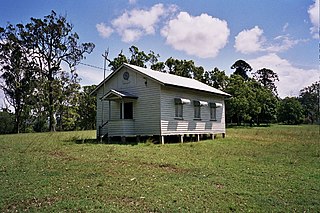
Wonglepong QCWA Hall is a heritage-listed community hall at 2779 Beaudesert-Nerang Road, Wonglepong, Scenic Rim Region, Queensland, Australia. It was built in 1935 by EJ Franklin. It was added to the Queensland Heritage Register on 11 November 2005.

St Patrick's Church is a heritage-listed Roman Catholic church at Rosewood - Aratula Road, Rosevale, Scenic Rim Region, Queensland, Australia. It was designed by Father Andrew Horan and built from 1888 to 1889. It was added to the Queensland Heritage Register on 11 December 2009.
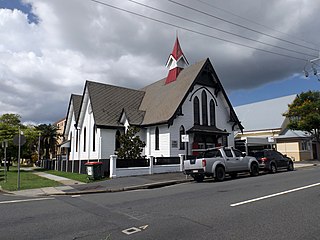
The Mowbraytown Presbyterian Church is a heritage-listed church precinct at 22-28 Mowbray Terrace, East Brisbane, City of Brisbane, Queensland, Australia. It was designed by architect Alexander Brown Wilson and built from 1885 to c. 1916. It is also known as East Brisbane Presbyterian Church. It was added to the Queensland Heritage Register on 22 October 1993.

Graceville Uniting Church is a heritage-listed churchyard at 215 Oxley Road, Graceville, City of Brisbane, Queensland, Australia. It was designed and built by Walter Taylor from 1917 to 1951. It was previously known as Graceville Methodist Church. It was added to the Queensland Heritage Register on 24 September 1999.

Hemmant Christian Community Church is a heritage-listed church at 69 Hemmant Road, Hemmant, City of Brisbane, Queensland, Australia. It was built from 1865 to 1866. It is also known as Hemmant Methodist Church, Hemmant Uniting Church, and Tingalpa Wesleyan Methodist Church. It was added to the Queensland Heritage Register on 21 October 1992.
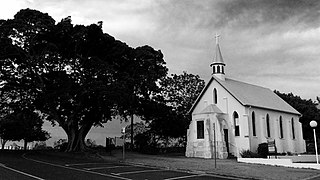
St Pauls Anglican Church is a heritage-listed church at Cross Street, Cleveland, City of Redland, Queensland, Australia. It was designed by James Furnival and built in 1873; it was extended in 1924 to a design by Lange Leopold Powell. It was added to the Queensland Heritage Register on 21 October 1992.

St Andrews Church is a heritage-listed Anglican church at Wellington Street, Ormiston, City of Redland, Queensland, Australia. It was built c. 1868. It was added to the Queensland Heritage Register on 21 October 1992.

St Brigids Catholic Church is a heritage-listed Roman Catholic church at 28 Matthew Street, Rosewood, City of Ipswich, Queensland, Australia. It was designed by Reverend Andrew Horan and built in 1909 by RJ Murphy with alterations in 1935. It was added to the Queensland Heritage Register on 21 October 1992.

St Augustines Anglican Church is a heritage-listed church at Dove Street, Leyburn, Southern Downs Region, Queensland, Australia. It was designed by Richard George Suter and built from 1871 to 1918. It is also known as St Augustine's Church of England. It was added to the Queensland Heritage Register on 21 August 1992.

North Pine Presbyterian Church is a heritage-listed church at Dayboro Road, Kurwongbah, Moreton Bay Region, Queensland, Australia. It was built from 1883 to 1884. It was added to the Queensland Heritage Register on 21 October 1992.

St John's Anglican Church is a heritage-listed church at 278 Ford Street, Berserker, Rockhampton, Rockhampton Region, Queensland, Australia. It was built in 1912. It was added to the Queensland Heritage Register on 5 August 2003.

Christ Church Anglican Church is a heritage-listed church at Cannon Street, St Lawrence, Isaac Region, Queensland, Australia. It was designed by Alfred Mowbray Hutton and built in 1898 by Newman Brothers. It was added to the Queensland Heritage Register on 27 October 2000.

St Saviour's Anglican Church is a heritage-listed former church building at 26 Hynes Street, South Johnstone, Cassowary Coast Region, Queensland, Australia. It was built from 1938 to 1939 by Mose Romano. It was added to the Queensland Heritage Register on 24 September 2004.

St Mary's by the Sea is a heritage-listed non-denominational church at Wharf Street, Port Douglas, Shire of Douglas, Queensland, Australia. It was built from 1913 to 1914. It is also known as the former St Mary's Roman Catholic Church. It was added to the Queensland Heritage Register on 21 October 1992.
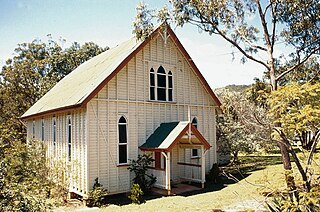
Herberton Uniting Church is a heritage-listed church at 2-4 Lillian Street, Herberton, Tablelands Region, Queensland, Australia. It was built in 1891 by R Petersens. It is also known as Herberton Presbyterian Church. It was added to the Queensland Heritage Register on 27 August 1999.

Ravenswood Community Church is a heritage-listed former Roman Catholic church at Chapel Street, Ravenswood, Charters Towers Region, Queensland, Australia. It was built in 1871 by Ross & O'Reilly. It is also known as St Patrick's Catholic Church. It was added to the Queensland Heritage Register on 24 September 1999.

St Michael and All Angels Church is a heritage-listed Anglican church at 2-6 Alford Street, Kingaroy, South Burnett Region, Queensland, Australia. It was designed by Colin Deighton and built in 1911. It was added to the Queensland Heritage Register on 17 September 2010.






















